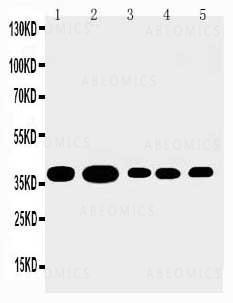Cookie preferences
This website uses cookies, which are necessary for the technical operation of the website and are always set. Other cookies, which increase the comfort when using this website, are used for direct advertising or to facilitate interaction with other websites and social networks, are only set with your consent.
Configuration
Technically required
These cookies are necessary for the basic functions of the shop.
"Allow all cookies" cookie
"Decline all cookies" cookie
CSRF token
Cookie preferences
Currency change
Customer-specific caching
FACT-Finder tracking
Individual prices
Selected shop
Session
Comfort functions
These cookies are used to make the shopping experience even more appealing, for example for the recognition of the visitor.
Note
Show the facebook fanpage in the right blod sidebar
Statistics & Tracking
Affiliate program
Conversion and usertracking via Google Tag Manager
Track device being used
| Item number | Size | Datasheet | Manual | SDS | Delivery time | Quantity | Price |
|---|---|---|---|---|---|---|---|
| ABE-39-2017-100 | 100 µg | - |
3 - 11 business days* |
801.00€
|
If you have any questions, please use our Contact Form.
You can also order by e-mail: info@biomol.com
Larger quantity required? Request bulk
You can also order by e-mail: info@biomol.com
Larger quantity required? Request bulk
Annexin I, also known as lipocortin I(Lipo1), belongs to the family of annexins. These proteins... more
Product information "Anti-Annexin A1"
Annexin I, also known as lipocortin I(Lipo1), belongs to the family of annexins. These proteins are though to control the biosynthesis of the potent mediators of inflammation, prostaglandins and leukotrienes. In two lipocortins(I and II) a short amino-terminal sequence distinct from the core structure has potential regulatory functions which are dependent on its phosphorylation state. The gene in the mouse encodes a protein of 346 amino acid residues. Mouse Lipo1 gene spans about 17 kb and is divided into 13 exons. Annexin I gene, mapped to 9q11-q22, is located on mouse chromosome 19. Annexin I acts through the formyl peptide receptor on human neutrophils. Peptides derived from the unique N-terminal domain of annexin I serve as FPR ligands and trigger different signaling pathways in a dose-dependent manner. Protein function: Plays important roles in the innate immune response as effector of glucocorticoid-mediated responses and regulator of the inflammatory process. Has anti-inflammatory activity (PubMed:8425544). Plays a role in glucocorticoid-mediated down- regulation of the early phase of the inflammatory response. Promotes resolution of inflammation and wound healing (PubMed:25664854). Functions at least in part by activating the formyl peptide receptors and downstream signaling cascades (PubMed:15187149, PubMed:25664854). Promotes chemotaxis of granulocytes and monocytes via activation of the formyl peptide receptors (PubMed:15187149). Contributes to the adaptive immune response by enhancing signaling cascades that are triggered by T- cell activation, regulates differentiation and proliferation of activated T-cells (PubMed:17008549). Promotes the differentiation of T-cells into Th1 cells and negatively regulates differentiation into Th2 cells (PubMed:17008549). Has no effect on unstimulated T cells (PubMed:17008549). Promotes rearrangement of the actin cytoskeleton, cell polarization and cell migration (PubMed:15187149). Negatively regulates hormone exocytosis via activation of the formyl peptide receptors and reorganization of the actin cytoskeleton (PubMed:19625660). Has high affinity for Ca(2+) and can bind up to eight Ca(2+) ions. Displays Ca(2+)-dependent binding to phospholipid membranes (PubMed:2532504, PubMed:8557678). Plays a role in the formation of phagocytic cups and phagosomes. Plays a role in phagocytosis by mediating the Ca(2+)-dependent interaction between phagosomes and the actin cytoskeleton. [The UniProt Consortium]
| Keywords: | Anti-p35, Anti-ANX1, Anti-ANXA1, Anti-Annexin-1, Anti-Annexin I, Anti-Annexin A1, Anti-Calpactin-2, Anti-Calpactin II, Anti-Lipocortin I, Anti-Chromobindin-9, Anti-Phospholipase A2 inhibitory protein, Polyclonal Antibody to Anti-Annexin A1 Antibody |
| Supplier: | Abeomics |
| Supplier-Nr: | 39-2017 |
Properties
| Application: | IHC (paraffin) |
| Antibody Type: | Polyclonal |
| Conjugate: | No |
| Host: | Rabbit |
| Species reactivity: | human |
| Immunogen: | A synthetic peptide corresponding to a sequence at the N-terminus of Human Annexin A1(3-24aa MVSEFLKQAWFIENEEQEYVQT). |
Database Information
| KEGG ID : | K17091 | Matching products |
| UniProt ID : | P04083 | Matching products |
| Gene ID | GeneID 301 | Matching products |
Handling & Safety
| Storage: | -20°C |
| Shipping: | +4°C (International: +4°C) |
Caution
Our products are for laboratory research use only: Not for administration to humans!
Our products are for laboratory research use only: Not for administration to humans!
Information about the product reference will follow.
more
You will get a certificate here
Viewed













